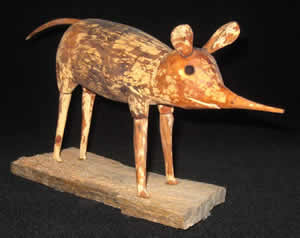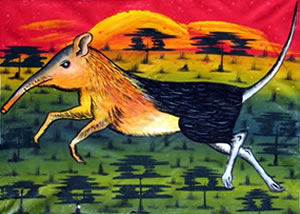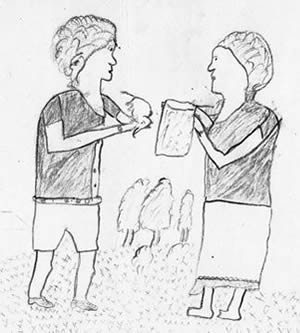Current Topics





Click on titles below for full articles
A New Species of Round-eared Sengi (Genus Macroscelides)
Macroscelides micus, the Etendeak round-eared sengi, is now the third species in the genus and is endemic to the Etendeka vocanic geological formation in northwestern Namibia.
Is there an undescribed form of Rhynchocyon in northwestern Mozambique?
An expedition to northwestern Mozambique was completed in June 2011 to collect specimens of giant sengis (Rhynchocyon) to determine their taxonomic status.
A Giant Sengi Among the World's 100 most Endangered Organisms
The Species Survival Commission of the IUCN and the Zoological Society of London have produced a list of the 100 most endangered species in the world (click on title above and see page 82). Even though the giant sengi (genus Rhynchocyon) that was recently discovered in the Boni forest in coastal northern Kenya (PDF) has not been formally described, named, or Red Listed, it nevertheless was included on the list. It was included because of its unusual evolutionary history, its restricted distribution, and the planned development of a deep-water port and oil facility in the area. This development will inevitably bring tens of thousands of people to the area, which will put enormous destructive pressure on the very small Boni and Dodori forests, where the sengi occurs.
URL: http://viewer.zmags.com/publication/44234ae6#/44234ae6/4
Document: PDF (422 KB)
Genus Macroscelides no longer monospecific
The currently recognized subspecies of Macrosclides proboscideus have been elevated to full species: M. proboscideus and M. flavicaudatus.
A new species of Elephantulus
The Karoo Rock Sengi is found in the Nama Karoo of South Africa and went unrecognised in museum collections for more than 30 years.
A new species of giant sengi (genus Rhynchocyon)
A new species of giant sengi (genus Rhynchocyon) has been described. It is only found in two high-altitude pristine forest blocks in the northern Udzungwa Mountains of south-central Tanzania, East Africa.
Which Giant Forest Sengi (Rhynchocyon) did you see?
In most forest and dense woodland habitats where Rhynchocyon occurs, it is relatively easy to distinguish the three species visually. However, R. cirnei has several subspecies and at least one of these may be difficult to distinguish from R. petersi, especially under field conditions. The material on these pages is intended to assist you in determining which species you observe in the field.
Protocols for surveying Rhynchocyon
In the next couple of years there will be numerous teams surveying the flora and fauna in several Tanzanian forests. Many of these teams have agreed to include sengis (elephant-shrews) in their surveys. The material on these pages is intended to try and achieve some consistency in the information gathered by a large number of people with varying backgrounds.